Linux-ready, open-platform ARM9/DSP SBC costs $89
May 7, 2010 — by Eric Brown — from the LinuxDevices Archive — 48 viewsFour distributors have begun shipping the open platform, Linux-ready Hawkboard single board computer (SBC) for as low as $89. Based on the Texas Instruments OMAP-L138 system-on-chip (SoC), which combines an ARM9 core and a DSP, the community-driven Hawkboard project is structured on the TI-sponsored BeagleBoard project, and is similarly designed for hobbyists and general testing.
Whereas the popular BeagleBoard is based on the Texas Instruments (TI) ARM Cortex-A8-based OMAP3530 SoC, the Hawkboard is built around the lower cost OMAP-L138 SoC announced last year. The OMAP-L138 combines one of three new TI floating point TMS320C674x digital signal processors (DSPs) with a 300MHz ARM926EJ-S core, allowing developers to add human machine interfaces (HMI), as well as applications that support touchscreen or networking capability. Power usage is said to total only 440mW.
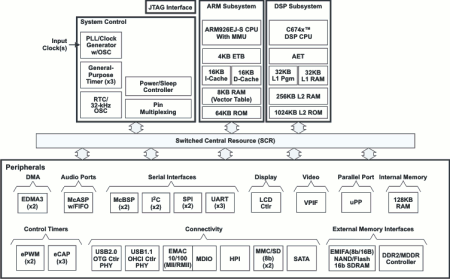
OMAP-L138 block diagram
(Click to enlarge)
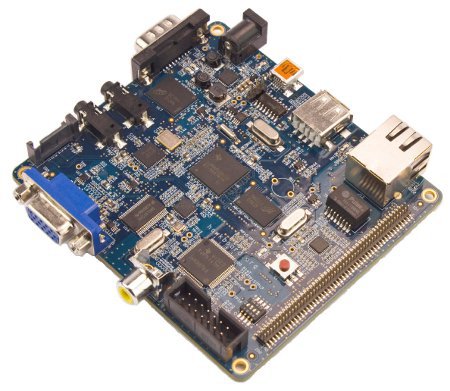
Hawkboard
(Click to enlarge)
A spinoff of sorts from the BeagleBoard project, but with no direct sponsorship from TI, Hawkboard.org hosts an open source community with blogs, community chat rooms, and Linux development tools. The site also posts full schematics, documentation, and development tools.
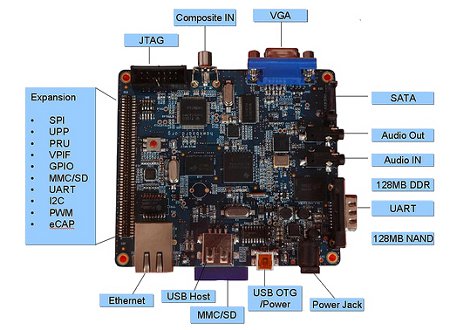
Hawkboard, detail
(Click to enlarge)

Hawkboard with peripherals
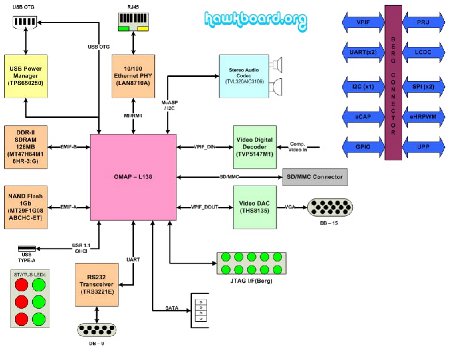
Hawkboard block diagram
(Click to enlarge)
- Processor — OMAP-L138 @ 300MHz
- Memory — 128MB DDR2 RAM
- Flash — 128MB NAND flash; MMC/SD slot
- Storage — SATA connector
- Display — VGA port; Composite video in
- Networking — 10/100 Ethernet
- USB — 1 x USB host Type-A; 1 x USB OTG (for power)
- Serial — 1 x RS232
- Debug — 1 x JTAG; optional XDS 100 JTAG Emulator
- Audio — Audio in/out
- Expansion I/O connector:
- I2C
- SPI
- LCD signals
- VPIF
- PWM
- eCAP
- UART
- GPIO
- PRU
- UPP
- eHRPWM
- Power — 5V DC
- Dimensions — 3.94 x 3.54 inches (100 x 90mm)
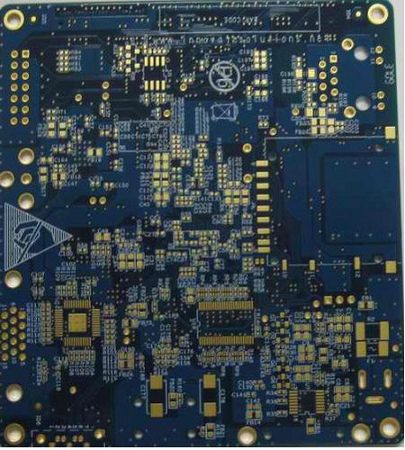
Hawkboard, back side
On one spec list, Android is listed as well, and the Hawkboard.org site offers a video (see farther below), which shows the SBC running Android, although with no other details supplied.
In his October announcement FAQ, Innovate Software Solutions' Khasim Syed Mohammed, who heads up the project, noted that a chief goal of the project is to introduce ARM programmers to DSP programming and get DSP programmers to work with ARM.
"The OMAP L 138 is a great and very simple processor; the register set is so simple that any one can start learning about the Linux drivers for any kind of peripherals," writes Khasim. "I think we as Linux developers need to learn DSP usage and not programming the same, and the DSP developers should learn how to program DSP so that ARM can use this. So, it's all about ARM utilizing the power of DSP."
Android running on a Hawkboard
(Source: Hawkboard.org)
(Click to play)
The Hawkboard is available now for $94 from Innovate Software Solutions, here, for $89 from Special Computing, here, as well as for 73.7 Pounds from Farnell, here, or for 5,000 Rupees plus tax at IDA Systems, here.
More information may be found at Hawkboard.org, here.
This article was originally published on LinuxDevices.com and has been donated to the open source community by QuinStreet Inc. Please visit LinuxToday.com for up-to-date news and articles about Linux and open source.